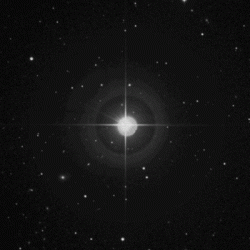

Greetings, fellow SkyWatchers! As the Moon slowly departs from the early evening scene, we have the chance to start the weekend off with shooting stars as we pass through a branch of the Ophiuchid meteor stream. Over the next few days we’ll take a closer look at variable stars, new star clusters and old friends as we head out into the night together…
Friday, June 20, 2008 – Although we will have Moon to contend with in the predawn hours, we welcome the “shooting stars” as we pass through another portion of the Ophiuchid meteor stream. The radiant for this pass will be nearer Sagittarius and the fall rate varies from 8 to 20, but it can sometimes produce unexpectedly more.

Hanging out in space far from the galactic plane, IC 4665 is anywhere from 30 to 40 million years old – relatively young in astronomical terms! This places the cluster somewhere between the age of the Hyades and the Pleiades. At one time the cluster was believed to have been home to an unusually large number of spectroscopic binaries. While this has been disproved, scopists will enjoy powering up on the approximate 50 members of this association to search for true multiple stars. Enjoy it tonight!
Sunday, June 22, 2008 – Today celebrates the founding of the Royal Greenwich Observatory in 1675. That’s 333 years of astronomy! Also on this date in history, in 1978, James Christy of the US Naval Observatory in Flagstaff Arizona discovered Pluto’s satellite Charon.
For observers of all skill levels and equipment, it’s simply time to stop and have a look at a seasonal favorite which is now nearly overhead—M13. You’ll find this massive globular cluster quite easy to locate on the western side of the Hercules “keystone” about a third of the way between the northern and southern stars—Eta and Zeta.
Thirty-four years ago, the Great Hercules Cluster was chosen by the Arecibo Observatory as the target for the first radio message delivered into space, yet it will be a message that won’t be received for over 25 centuries. Look at it with wonder tonight… For the light that left as you are viewing it tonight did so at a time when the Earth was coming out of the Ice Age. Our early ancestors were living in caves and learning to use rudimentary tools. How evolved would our civilization be if we ever received an answer to
our call?!
Wishing you clear skies and a wonderful weekend!
The week’s awesome images are Theta Coronae Borealis – Credit: Palomar Observatory, courtesy of Caltech, Solstice and Equinox – Credit: NASA, IC 4665 – Credit: Palomar Observatory, courtesy of Caltech, Pluto and Charon – Credit: NASA, and M13: “The Great Hercules Cluster” is the inspiring work of none other than R. Jay GaBany.
If you've ever looked at Mars through a telescope, you probably noticed its two polar…
Our Solar System is in motion and cruises at about 200 kilometres per second relative…
Late is better than never for the ‘Blaze Star’ T Coronae Borealis. It was on…
A planet's history is told in its ancient rock. Earth's oldest rocks are in the…
Data from the Chinese rover Zhurong is adding to the pile of evidence for oceans…
New information is pushing Asteroid 2024 YR4 off of our front pages. Initial estimates gave…